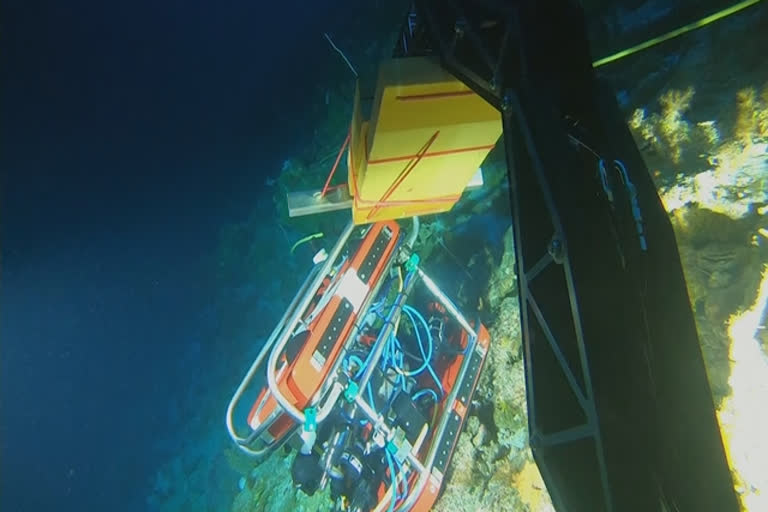Alphonse Island, Seychelles: A British-led marine scientific mission in the Seychelles failed on Wednesday to retrieve a key piece of equipment from the sea bed, where it had fallen after its cable was cut, the day before.
Submersibles tried twice to bring the lost Remotely Controlled Vehicle to the surface, but strong underwater currents thwarted them.
The Nekton Mission is embarked on an unprecedented exploration of the Indian Ocean to document changes taking place beneath the waves that could affect billions of people in the surrounding region over the coming decades.
It wasn't the kind of science task the Nekton Mission had intended: how to use blocks of buoyant foam and bags of sand to float a stranded underwater drone and get their stalled quest back on track.
"We're using the sand to neutralize the buoyancy of the floatation device we are using to raise the ROV to the surface,"said Nekton's Mike Pownall.
"Once we've attached the sand it will go down, once we've attached it to the ROV the sand will be released and the ROV will float up to the surface."
The improvised life-jacket was scraped together using items found on board, then attached to one of the Mission's submersibles, for it to hook onto the ROV.
US submersible pilot Robert Carmichael was upbeat about the challenge.
"The chances of this working are probably about 50-50," he said.
"but we're going to give it a nudge on the good side because we're out here trying to do some good, and today happens to be my birthday so let's go get some."
Almost all science work stopped on Wednesday, with the focus on the retrieval attempt. The ROV, which carries video cameras, is a vital piece of equipment for the scientists in their deep ocean data collection work.
Late in the day, one submersible was sent down, its crude rescue device clearly visible as it slid beneath the waves off remote Alphonse Island.
In the sweltering control room, an anxious wait as the pilot zeroed in on his target, below the waves.
But it was not to be. The make-shift floatation device was released too early and floated away in the current. No rescue yet for the precious ROV.
Also Read:France tries to contain fuel spill in Atlantic
The mission's second sub went down to try a simpler approach: attaching a line to pull it up.
One scientist – her work on hold – watched the drama and took the philosophical approach.
"The sea is all-powerful. It is a hostile environment and we just have to live with that," said Professor Louise Allcock.
As night fell, the attempt was called off, as currents made it impossible to get close to the ROV.
They will try again on Thursday.



